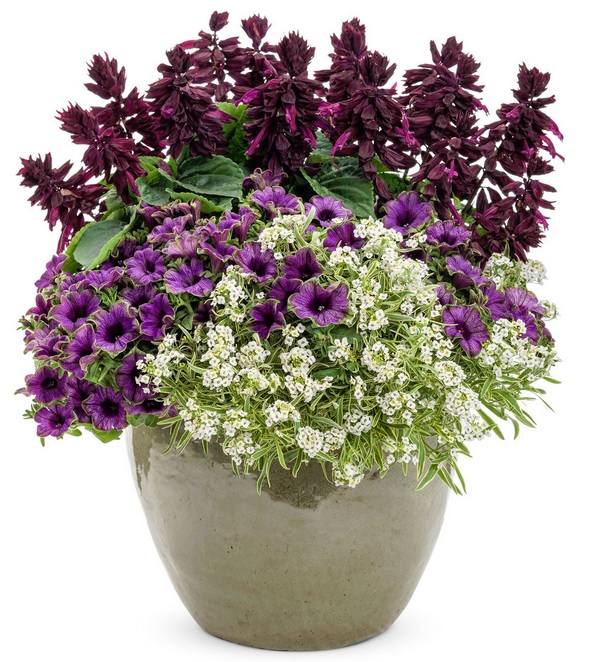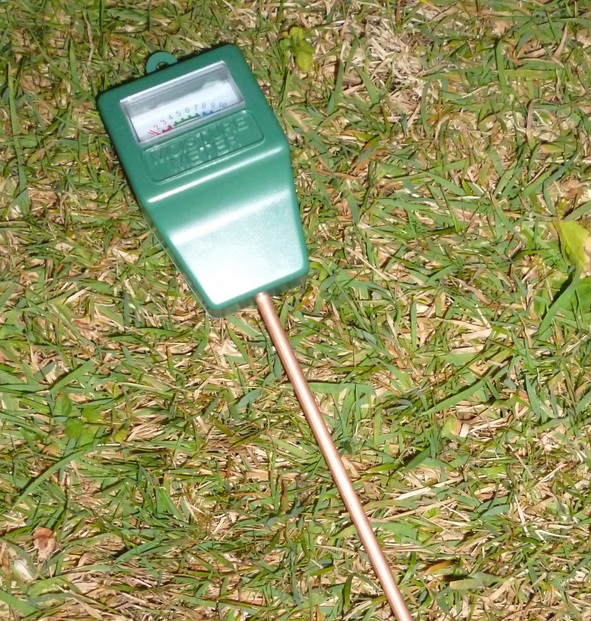 Temperatures have warmed up. We’ve had an abundance of rain. Insects have recently hatched and are multiplying like mad. So, how do you keep your plants looking fabulous through it all? Plants have some built in defenses, but you can greatly help them along through stressful conditions. It comes down to managing the moisture as best you can, and feeding them regularly, along with removing the spent blooms.
Temperatures have warmed up. We’ve had an abundance of rain. Insects have recently hatched and are multiplying like mad. So, how do you keep your plants looking fabulous through it all? Plants have some built in defenses, but you can greatly help them along through stressful conditions. It comes down to managing the moisture as best you can, and feeding them regularly, along with removing the spent blooms.
Managing moisture levels starts when the plants are potted. The selection of the potting mix is the key to success. This is definitely a year when drainage is the most important consideration. Moisture control mixes tend to hold water for an extended period, which is helpful during dry periods but not so much when it rains. 
It’s also important to feel the soil before watering. Just like in most every other aspect of life, making assumptions are not a good idea. Sometimes plants look as though they are wilting but they are really flagging due to high temperatures, reflective heat from nearby walls or concrete, or even because their root systems are so water logged leaving the plants unable to draw up moisture. All the more reason to use a moisture meter or to get your fingers dirty and feel the soil.
Watering in the morning is better than watering in the heat of the day or in the evening. Why? When plants approach the day well hydrated, then they will be less stressed during the height of the heat of the day. When plants are watered at night, it’s really a sort of recovery tactic. Additionally, as moisture evaporates off the soils surface when the night temperatures cool, it’s the perfect set of condition for fungi like powdery mildew to take hold. 
One of the most important things you can do is fertilize your plants regularly. If you are growing flowering annuals, choose a high phosphorus fertilizer, like Jack’s Classic Blossom Booster. If you’ve ever wondered what those 3 numbers are on a package of fertilizer (ex. 10-30-15), they represent the percentage of the nitrogen, phosphorus and potash in the fertilizer. The middle number represents the phosphorus which promotes flowering . For flowering, this number should be 3 to 5 times higher than the first number, which represents the percentage of nitrogen to promote green growth. Follow the directions on any fertilizer you choose. Each is formulated differently and will have varied instructions for use. We’re asking our plants to perform at their best during the most stressful part of the summer. If we don’t supply them with the appropriate nutrition, they can’t live up to our expectations. If you purchased a potting mix that said it included a fertilizer, it’s a good idea to supplement it around mid July. More often than not, the fertilizer in the potting mix is just a little something to get things started and doesn’t support the plants for the long haul.  Lastly, a little selective pinching and dead-heading (removal of the spent blooms) will keep plants looking fresh. Pinching and pruning stimulates new growth which brings new flowers, too.
Lastly, a little selective pinching and dead-heading (removal of the spent blooms) will keep plants looking fresh. Pinching and pruning stimulates new growth which brings new flowers, too.